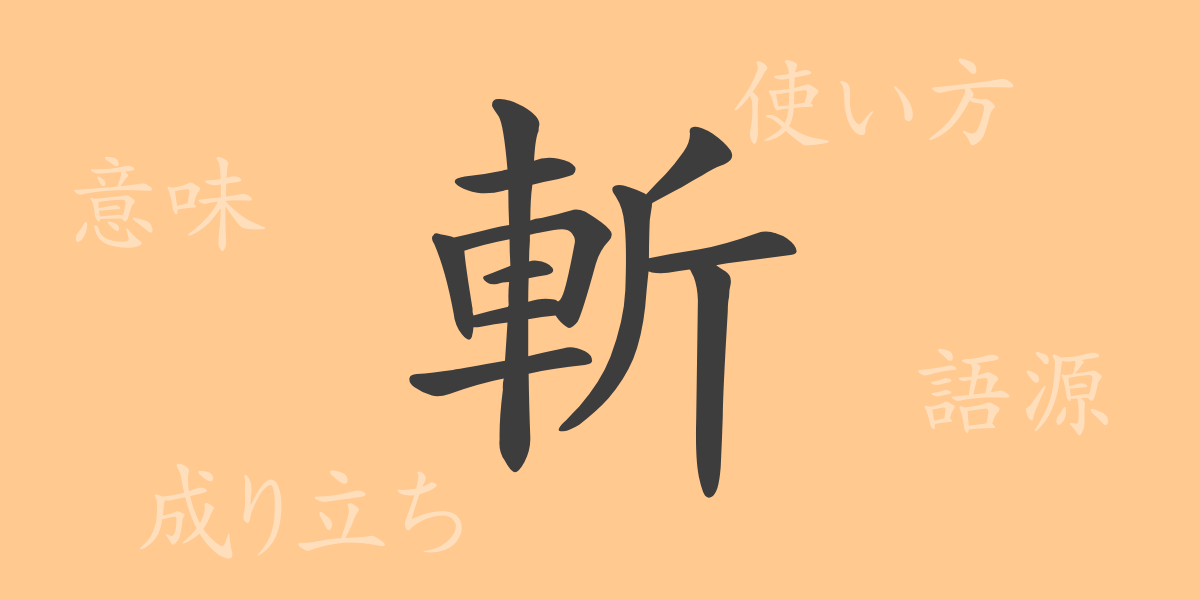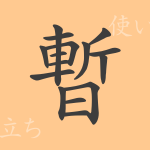The characters of the Japanese language, especially kanji, carry deep history and meaning in each stroke. The kanji “斬(ざん)” is no exception. Its strength and delicacy symbolize the beauty of the Japanese language. In this article, we will delve into the world of “斬(ざん),” exploring its origins and modern usage. We hope this article helps readers deepen their understanding of “斬(ざん).”
Origins of 斬(ざん)
The origins of the kanji “斬(ざん)” trace back to ancient China. This character combines “戔(せん),” which signifies fighting with a sword, and “斤(きん),” a character representing an axe. Initially, it depicted cutting down with an axe or sword. Over time, “斬(ざん)” has evolved to carry more abstract meanings and is now used in various contexts.
Meanings and Usage of 斬(ざん)
In modern Japanese, “斬(ざん)” means “to cut down” or “to sever.” It is also used figuratively. For example, the adjective “斬新(ざんしん)” means “innovative” or “fresh,” often used to describe ideas or works. The idiom “一刀両断(いっとうりょうだん)” refers to decisively cutting through a problem.
Readings, Stroke Count, and Radical of 斬(ざん)
Understanding the readings and structure of “斬(ざん)” enriches its usage.
- Reading: On’yomi (音読み) is “ザン(ざん),” Kun’yomi (訓読み) is “きる”
- Stroke count: 11 strokes
- Radical: 斤部(おのぶ) (axe radical)
Idioms, Phrases, and Proverbs Using 斬(ざん) and Their Meanings
Idioms and phrases that include “斬(ざん)” showcase the richness of Japanese expression. Here are a few examples:
- 斬新(ざんしん) – An adjective meaning innovative or fresh.
- 一刀両断(いっとうりょうだん) – To cut decisively through something.
- 切り捨て御免(きりすてごめん) – A feudal samurai’s right to cut down someone for a valid reason.
- 縦横無尽(じゅうおうむじん) – To act freely and without restraint, originally describing the movement of a sword.
Conclusion on 斬(ざん)
The kanji “斬(ざん)” carries stories from ancient times within its form and history. From the concrete meaning of cutting with a sword or axe to the abstract uses in expressions like “斬新(ざんしん),” this character broadens the range of expression in Japanese. Learning about “斬(ざん)” not only deepens understanding of the language but also enhances expressive skills, making it a vital part of daily communication.

























